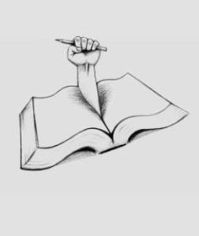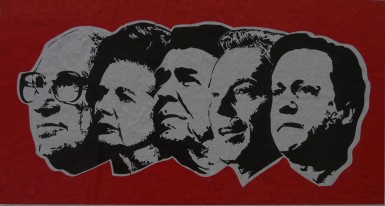Know Your Theory! – Critical Pedagogy and Composition Edition
This series of blog posts will provide an overview of the composition field’s relevant pedagogies. These posts will draw mainly upon the excellent A Guide to Composition Pedagogies by Gary Tate et. al. The book is divided into chapters based on the different pedagogies. The breakdown for each post will be around 1/2 summary and 1/2 my own reflections, analysis, anecdotes, and commentary. Although I’m writing these posts to help myself process through and reflect upon the field of composition, it’s my hope that any teacher of writing can find something of interest. Part 1 (Collaborative Writing Pedagogy) can be found here.

This week’s post examines critical pedagogy from the perspective of the composition classroom. Critical pedagogy envisions a society devoted to issues of social justice and freedom. If traditional education is about raising the individual to improve society, then critical pedagogy recognizes the need to improve the society in order to raise the individual. To this end critical pedagogies look to engage students in analyses of how cultural practices and institutions (including schools) replicate certain power dynamics and social hierarchies.
Paulo Freire’s Pedagogy of the Oppressed is the ur-text for critical pedagogy. This 1970 work introduced several important concepts such as the banking model of education (the notion that traditional schooling positions students as passive receptacles, teachers as cultural arbiters, and knowledge as demarcated units of discrete information), schooling as an instrument of cultural domination (curriculum and instructional practices that value specific types of knowledge) and critical consciousness (questioning the nature of lived experience and the unspoken norms governing our society).
Freire’s theory situates him as a social constructivist; for him, knowledge is a socially constructed linguistic product. He is therefore interested in language as a mechanism of both domination and possible resistance. Although language as domination is certainly not a new topic (see Lisa Delpit and Gloria Ladson-Billings, for instance), contemporary scholars such as Christopher Emdin and Gert Biesta continue to explore how curriculum, speech, and agency operate in the classroom.

American critical pedagogy hit its stride during the 1980s as a radical response to conservative reports on education such as A Nation at Risk and Action for Excellence. The rise of neoliberalism during the 1980s produced reactionary and canonical works by academics such as Henri Giroux, Ira Shor, and Peter McLaren. These critical pedagogues worked to bring light to the ways schools functioned as sorting mechanisms to perpetuate inequality.
Through the works of these and other scholars, American critical pedagogy aims to inspire students to reimagine what it means to build a society based on democratic values and the respect for difference. Critical teachers wrestle with four central questions:
1. What does a critical classroom look like?
2. Can we create democratic classrooms within traditional institutions?
3. Is the goal to produce radical student activists? How?
4. Is Freirean pedagogy applicable to American schools?
Classroom Practice
While early American critical pedagogues like Giroux produced canonical texts that galvanized educators (check out Schooling and the Struggle for Public Life or Critical Teaching and Everyday Life), many teachers expressed frustration with the inattention to classroom practice. The authors consider Ira Shor to be an important exception. His books Empowering Education and When Students Have Power bridge theory and practice with activities, anecdotes, and critical reflections. Shor invited a group of students to meet with him regularly after class to evaluate the day’s session and activities. Doing so allowed teacher and student to negotiate together the various contradictions inherent in the critical classroom.
Can Classrooms Be Democratic?
Thinking about democracy as a set of static actions and chunks of knowledge (voting, awareness of laws and various judicial and legislative processes) ignores the concept’s need for continuous renewal, deliberation, and public contestation. Democracy as a mode of being rather than a series of skills to be imparted and enacted. Democratic classrooms are not ones in which the teacher abdicates all power. Especially in terms of the secondary classroom, where I teach, the teacher must remain “in charge.” The contradictions of teaching for critical resistance in a highly structured environment remain one of the biggest challenges to any critical educator. It is possible, and indeed highly recommended, to engage students in as many decisions as possible while still allowing for professional control and guidance.
Producing Student Activists
It should go without saying that education is highly political. The content we teach, the methods we use, and the perspectives we highlight are political decisions. That said, the image of the classroom as an overtly political arena doesn’t sit right. My experiences de-testing and de-grading my classroom last year let me see first-hand the way many students (and adults) push back against any sort of explicit proselytizing. At the time I naively thought I was liberating both students and myself from a mechanistic and reductive assessment system. I openly spoke with them about my decision in an attempt at transparency. While my intentions might have been in the right place, my actions served mainly to polarize the class. Certain kids celebrated it while others dug in their heels and became hostile. I had forgotten that critical pedagogy is a process, not something to be delivered.
Freire in America
Poststructuralist and feminist educators have made valuable contributions to liberation pedagogy by unpacking Freire’s uncritical empowerment rhetoric. For, as the authors explain, to empower someone suggests an agent who empowers and a willing object who receives power from another. This setup mirrors Freire’s own banking analogy of education mentioned above, where power moves unidirectionally from teacher to student. We hear echoes of this when educators seek to “give minority students a voice,” a statement that ignores the fact that children already have voices.
As originally conceptualized, Freire’s critical pedagogy positions power as a commodity to be traded around and horded. As academics like Foucault have persuasively articulated, power is more of a verb than a noun. It is “exercised instead of owned.” Contemporary theory helps us reject the binaries of teacher/student, us/them, and oppressor/oppressed. We now understand identity and power to be relational constructs that “form (and reform) at the intersection of multiple axes of difference and power.” Viewing students as objects in need of saving is paternalistic and deleterious for teachers and students alike. Scholars working within poststructuralism, feminism, and critical race theory have successfully expanded upon Freire’s original aims to create a more inclusive rhetoric of power and resistance.
What Does This Mean for Teachers?
This brings us back to the aforementioned point about what critical pedagogy looks like in the composition classroom. While the authors refrain from providing many examples of what critical pedagogy might look like in a composition classroom, providing specific instructional strategies isn’t necessarily the purview of the book (or this post). Critical pedagogy is a practice, the routine contestations of power, value, and authority. The critical writing classroom asks students to examine the systems of academic discourse that bolster certain voices while devaluing or silencing others. Much of schooling’s “common sense,” assessment policies and grades, assignments, norms, and readings must all be scrutinized under a critical gaze. We can help students become aware and critical of the hegemonic forces informing our modern life. What better place to start than in the writing classroom?
So glad you are doing these posts, Peter. So smart, as usual. These will be great as starting points for our summer conversations.
LikeLiked by 1 person
Thanks, Sarah!
LikeLike